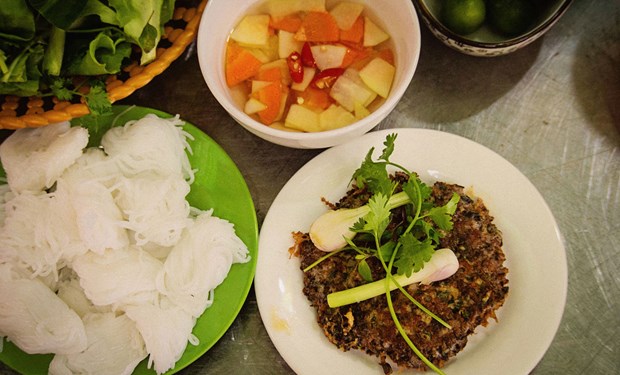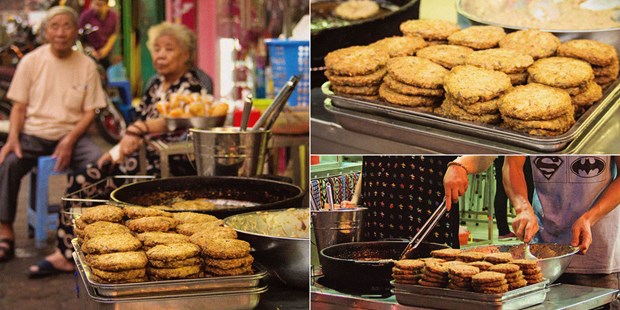Vu
Bang looked forward to the rare autumn days when light rain and sunshine
mingled in the clouds.
In
addition to rainbows, Bang looked to sun showers as a sign of the fish bait
feasts to come.
On
those rare and beautiful days, farmers in the Red River Delta dropped whatever
they were doing to skim ragworms out of the brackish waters north of the
capital, throw them on ice and make a beeline for the city center.
His
book, Hanoi Delicacies, contains a
lengthy description of the days when cooks patiently awaited these harried
farmers as they rushed through alleys in fear of the moment when their buckets
of prized worms might turn from a lively red to a toxic, smelly green. Wise
housewives, Bang noted, had to work just as fast.
A
northerner at heart, Vu Bang even remarked: “An autumn without ragworms feels
as tragic as a woman who has wasted her youth.”
Ragworms,
unlike laggard ladies, never waste a single second. During high tides, the
species engages in a passionate mating ritual that ends in the death of the
male and (if Bang has his druthers) the netting of the female.
Despite
the capital's rapacious appetite, thousands of fertilized eggs manage to find
their way to the roots of riparian rice stalks.
In
addition to the creature's amazing timing, Bang prized them for their crunchy,
nourishing meat.
The
poshest Hanoi households fried the prized worms in omelets scented with
tangerine peel, creating an invigorating delicacy typically reserved for old
folk suffering from creaky bones.
As
a spy stuck in Saigon during the sixties, Vu Bang pined for the rare arrival of
a package of fried or fermented ragworms.
During
the 19th century, Hanoi's booming ragworm business leant its name to one of the
36 streets in its Old Quarter.
Though
Ragworm Street now blooms with fake flowers, a sizzling omelet can still be
found at many family stalls around the city's buzzing core.
Fresh out of the
bucket
In
the two-meter Hang Chai alley, a short walk from Ragworm Street, Quan spreads
out a floral tablecloth before laying out pots of spices and a slender bench.
A
favorite of local food writers, Quan proudly told us how the tasty worms had
provided him a small fortune and put his children through school.
Live
ragworms fetch around VND500,000/kg ($23/kg) in addition to a long-distance
delivery fee. Quan sells a few kilograms per day to his regulars.
The
greasy heft of Quan's ragworm omelet is mitigated, somewhat, by a few dunks in
watery fish sauce and the addition of fermented papaya, cilantro and packed
rice noodles.
While
home cooks might freeze live ragworms to keep them through the season, Quan
disdains the practice. When the worms retire for the season he returns to
selling noodles and waits patiently until autumn to pick up his spatula.

Quan’s fresh ragworm omelet.
Why frozen ragworms?
Vu
Bang himself approved of just two methods for preparing: a fresh catch-frying
or fermentation.
What
might he make of the vacuum-sealed bags now used to stave off spoiling for
months?
One
19-year-old ragworm stall at the end of Lo Duc Street serves the critters every
month of the year, except July.
Hang,
a chubby old hand, claimed there were now two ragworm seasons: spring and fall.
"During the rest of the year, we sell less, and meet our needs with pork
meatballs, bun cha, spring rolls…”.
Since
1997, Hang has relied on a freezer to help her meet demand, which can stretch
up to a few dozen kilograms per day. She also ships vacuum-sealed bags to
customers pining away for them in central and southern Vietnam.
In
some ways, it seems, Hang provides a humble year-round stop-gap for ragworm
junkies like Vu Bang.

Hang's year-round omelets are a hit with middle-aged and elderly eaters.
By Quynh Trang/VnExpress